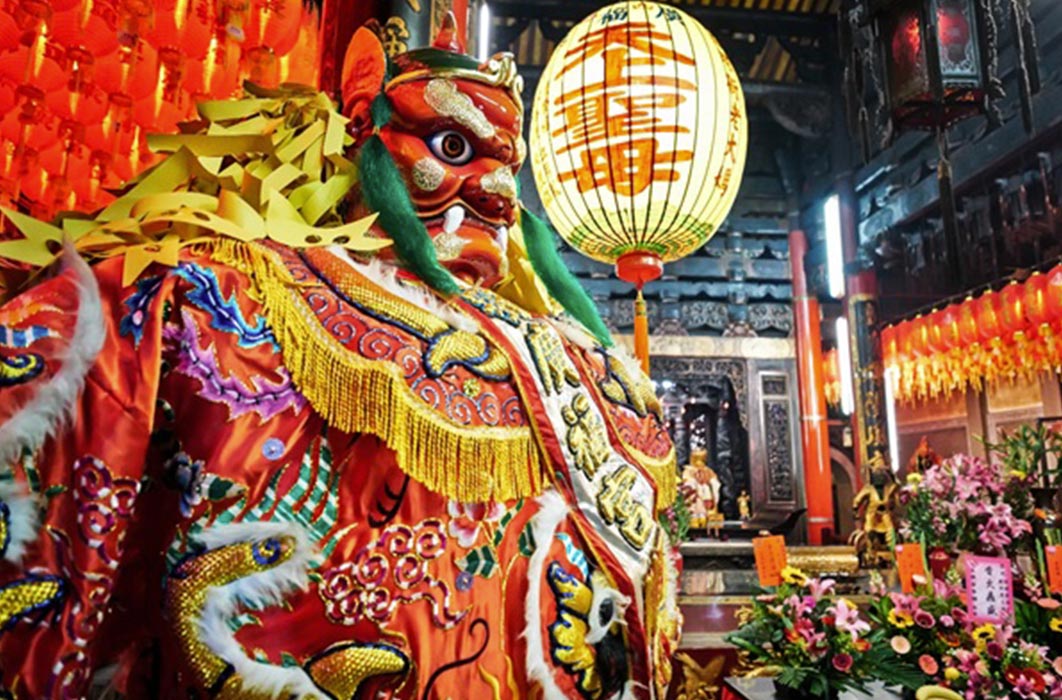
Lei Gong and the Ministry of Thunder and Storms
Thunderstorms were one of the most powerful and frightening natural phenomena encountered by the ancients. However, it paradoxically also brought life-giving rain. The universal experience of thunder and lightning shared by cultures around the world gave rise to many corresponding legends, which explain these phenomena as caused by gods and spirits in the sky. Many similarities are found in the figures of the thunder gods or the personifications of the forces of thunder in different cultures around the world.

Indra with his thunderbolt, Vajra riding on his elephant, Airvata by E. A. Rodrigues - The complete Hindu Pantheon (1842) (Public Domain)
Global Thunder Gods
Thunder gods such as Indra in Hindu mythology and Zeus in Greek mythology are so powerful that they were also known as the king of the gods. Inscriptions on the Boghazkoi clay tablets dated to about 1400 BC mentioned Indra reverentially as a deity as well as three other names. The names are Mitra (the god of light), Varuna (the god of sky and water) and Nasatya-Asvin (the youthful divine twin horsemen who travelled in a chariot drawn by horses that are never weary). With Indra, they are revered deities of the Vedic pantheon. Indra is the king of svarga (heaven) and the devas (deities). He is the god of the heavens, lightning, thunder, storms, rain, rivers and war. He is also celebrated as the one who kills the great symbolic evil named Vritra, who obstructs human prosperity and happiness. Indra's iconography shows him wielding a thunderbolt known as Vajra and riding on a white elephant known as Airvata. Indra's heavenly home is on Mount Meru.

Zeus, with his thunder bolts by P. Bransom in An Argosy of Fables (1921) (Public Domain)
Zeus’ stories and powers are similar, though not identical to Indra. Living on Mount Olympus, Zeus was respected as an allfather, chief of the gods. Pausanias observes that: “…Zeus is king in heaven, is a saying common to all men”. Zeus is also often depicted as carrying a thunderbolt. Despite not being the king of the gods, Norse mythology’s hammer-wielding Thor, with his power over lightning and thunder, was also described as a heroic leader and protector of mankind. Although Indra, Thor and Zeus are probably the most well-known, they are of course not the only thunder gods. A slightly more modest thunder god from Chinese mythology is Lei Gong, who carries a drum and a mallet to create thunder, and a chisel to punish any humans who have done wrong.

Master Thunder Lei Gong (1542) (Public Domain)
The Chinese Bureaucratic Pantheon
Lei Gong is different from the other, more well-known, thunder gods as he is not as clearly defined as an individual god. To understand the reason for this, it is useful to first comprehend how the Chinese pantheon is organized. The Chinese religion recognizes three domains in the cosmos - heaven, earth and the underworld. Each domain is populated by a host of gods and goddesses. It also is helpful to understand that the social organization of the human government is the essential model that the ancient Chinese used when imagining the gods. Therefore, the ancient Chinese conception of gods is based on the Chinese bureaucracy. The heavenly domain is ruled by Yu Huang (the Jade Emperor) who presides over a court of deities worshipped throughout China. The Jade Emperor in heaven corresponds to Tianzi (the Son of Heaven), the sacred imperial title of the Chinese emperor who is believed to rule on earth. The title originated with the ancient Zhou dynasty (c. 1046 BC–256 BC). The Jade Emperor is in charge of a heavenly administration which are divided into bureaus and each god working under his leadership takes responsibility for a clearly defined function.




